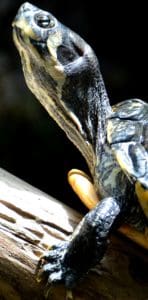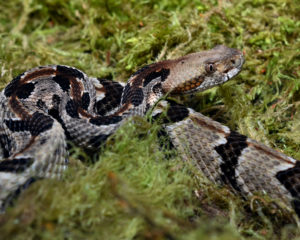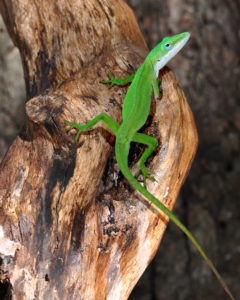Can You Name the Reptile?
By Thomas Waser In UncategorizedDecember 2, 2016
Have you visited the VLM recently? We have tons of cool exhibits full of awesome animals including, of course, our herpetology collection. Think you can identify some of the Virginia Living Museum’s reptiles from a close up photo? Test your skills at determining the identities of these Virginia native species!
1.

2.

3.

4.

5.

6.

7.

8.

9.

10. 

Answers:
1. Canebrake (Timber) Rattlesnake (Crotalus horridus)


Despite being a venomous species, you have little to fear from the canebrake rattlesnake. These pit vipers are relatively docile, and offer plenty of warning before striking!
2. Eastern Box Turtle (Terrapene carolina carolina)


The shell of the eastern box turtle is double hinged. This allows the turtle to hide inside its shell and close up tightly, protecting her from predators like raccoons!
3. American Alligator (Alligator mississippiensis)


The American alligator has one of the strongest bites in the entire animal kingdom. Armed with around 80 teeth, these guys can chop through even the toughest materials, like turtle shells!
4. Diamondback Terrapin (Malaclemys terrapin)


Unlike most aquatic turtles that prefer freshwater (and sea turtles that prefer salt), diamondback terrapins prefer water that is brackish, in estuaries where fresh meets salt water. They are often easy to identify thanks to their large white beak!
5. Pine Snake (Pituophis melanoleucus)


The pine snake can be a fearsome animal, hissing loudly to scare off predators. She has a flap in her mouth that can amplify her hiss like a megaphone!
6. Wood Turtle (Glyptemys insculpta)


The wood turtle is smarter than your average turtle. These guys thump on the ground with their feet to mimic the sound of rain, drawing earthworms out of the soil for lunch!
7. Green Anole (Anolis carolinensis)


The green anole is occasionally called the “American Chameleon”. Though not a true chameleon species, this small lizard is capable of changing its color, based on mood and temperature!
8. Yellow-bellied Slider (Trachemys scripta scripta)


A common sight in our local waterways, the yellow-bellied slider can be easily identified by its yellow “tear drop” stripe behind the eyes.
9. Five Lined Skink (Plestiodon fasciatus)


These little lizards can be seen darting between cover while hunting in warm weather. The young skinks have a bright blue tail that fades over time as they age.
10. Spiny Softshell Turtle (Apalone spinifera)


Okay, if you didn’t get this one, that’s on me. While we don’t currently have a softshell turtle here at the VLM, they can be found in the mountains of western VA. Rather than the hard, bony shell of most turtles, the softshell turtle has a shell that is flexible and leathery!
So how did you do? Even if you could only identify one or two, that’s an achievement (it’s no small task to identify an animal just from a little piece)! To learn more about these amazing reptiles, come visit them (minus the softshell, of course) here at the Virginia Living Museum! Their wild counterparts may be inactive this winter, but our guys will be warm and active all through the holiday season!
Credit goes to Karl Rebenstorf for his amazing photography!







No Comment
Sorry, the comment form is closed at this time.